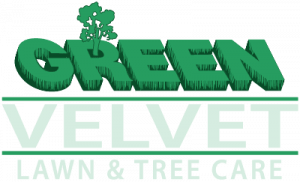Tree Pruning
Pruning
Prune at the right time of year. Trees and shrubs that flower before June, usually on the previous years wood, should be pruned after they have flowered. Trees and shrubs that flower after June, usually on new growth, can be pruned in the early spring.
Use the correct tool for the size of branch to be removed: hand pruners (secateurs), for growth up to 3/4” (2cm) in diameter; long-handled loppers for growth up to 1 1/2 “(4cm) in diameter; or a pruning saw for growth up to about 6” (15cm) in diameter.
Always use clean, sharp tools.
Always use hand pruners (secateurs)or loppers with the blade side towards the plant and the hook towards the part to be removed.
Don’t leave stubs. Whether you are cutting off a large branch or dead heading a lilac, always cut back to a join. Branches should be removed to the branch collar, and smaller growth should be cut back to a bud or branch union. There is no absolute set angle for pruning, but generally a 45-degree angle is preferable. Each plant should be pruned according to its individual needs.
Never use pruning paint or paste. Trees have a natural ability to create a barrier between lining and dead wood. Painting over a cut impairs this ability.
Avoid cutting off the top of a tree, or topping. Topping is not good for a tree’s overall health. It also causes a tree to send out too many side shoots at the top.
– Thanks to the International Society of Arboriculture (ISA)
Pruning Terms
When ordering pruning services, it helps to use the proper pruning terms. Our staff includes certified arborists that are only too glad to help you determine your pruning needs.
Crown: Above-ground portions of a tree, consisting of trunk, branches and leaves.
Branch: A secondary shoot or stem arising from one of the main axis (i.e. trunk or leader) of a tree.
Lateral: A side branch or twig.
Leader: A dominant upright stem, usually the main trunk.
Water Sprout: A vigourous shoot arising from the above-ground portion of a tree or above the graft union.
Sucker: A vigourous shoot arising at or below the graft union.
Girdling Roots: Roots located above or below ground level whose circular growth (around the base of the trunk or over individual roots) applies pressure to the bark area, thereby choking or restricting the flow of sap.
Pruning: Removal of unwanted parts of the plant.
Crown Cleaning: Removal of dead, dying, diseased or weakly-attached branches from the tree crown.
Crown Thinning: The removal of branches to let in light, reduce wind resistance, remove unwanted branches, to retain a tree’s natural shape, or for crown cleaning.
Crown Raising: The removal of lower branches for under-clearance.
Crown Reduction: Pruning a branch or branches back to a lateral large enough to assume dominance and maintain symmetry.
Crown Restoration: Restoring natural growth habits in a tree that has been previously damaged by incorrect pruning or natural causes.
Internodal Heading or Heading: The severe reduction of branches without consideration of plant form or health. (Not a recommended practice)
Pollarding: A training process that involves severe topping or heading the first year, and sprout removal annually or every few years.
Vista Pruning: Pruning for a view from a pre-determined point.
Juniper Pruning
We offer correct juniper pruning by Green Velvet technicians. Junipers include spreading, upright, pyramidal and creeping types. All junipers develop a dead zone in the centre due to lack of sunlight. New growth will not develop from the dead zone unless green needles remain. To correct the shape of a juniper, we prune before new growth starts in early spring, reducing their size and bringing the shrub into proportion. Creeping junipers are selectively cut back to vigourous lateral branches for coverage and healthy growth that covers the soil in a gorgeous layer of leafy green.
Plant Propagation
Plant Propagation
From a great book called “Gardening Month by Month in British Columbia” by Alison Beck and Marianne Binetti page. 99
August is a good time to propagate plants. Taking cuttings and gathering seeds are great ways to increase your plant collection and to share some of your favorite plants with friends and family.
Now is a good time to divide some perennials and to note which of your plants will need dividing next spring. Look for these signs that perennials need dividing.
- The center of the plant has died out.
- The plant is no longer flowering as profusely as it did in previous years.
- The plant is encroaching on the growing space of other plants.
Perennials, trees, shrubs and tender perennials that are treated like annuals can all be started from cuttings. This method is an excellent way to propagate varieties and cultivators that you really like but that are slow or difficult to start from seed or that don’t produce viable seed.
There is some debate over what size cuttings should be. Some people claim that smaller cuttings are more likely to root and will root more quickly. Others claim that larger cuttings develop more roots and become established more quickly once planted. Try different sizes and see what works best for you.
Always make cuttings just below a leaf node (point where the leaves are attached to the stem).
Seed Collecting
Many gardeners enjoy the hobby of collecting and planting seeds. You need to know a few basic things before you begin:
Know your plant. Correctly identify the plant and learn about its life cycle. You will need to know when they flower, when the seeds are likely to ripen and how the plant disperses its seeds in order to collect them.
Find out if there are special requirements for starting the seeds. For example, do they need a hot or cold period to germinate?
When collecting seeds, consider the following:
- Collect seeds once they are ripe but before they are shed from the parent plant.
- Remove capsules, heads or pods as they begin to dry and remove the seed later, once they are completely dry.
- Place a paper bag over a seed head as it matures and loosely tie it in place to collect seeds as they are shed.
- Dry seeds after they’ve been collected. Place them on a paper-lined tray and leave them in a warm, dry locations for one to three weeks.
- Separate seeds from the other plant parts and clean them before storing.
- Store seeds in air-tight containers in a cool, frost-free location
Top Dressing
Proper Mulching Techniques
Developed by the International Society of Arboriculture (a non-profit organization supporting tree care research around the world and dedicated to the care and preservation of shade and ornamental trees. For further information, contact www.isa.arbor.com )
Mulches are materials placed over the soil surface to maintain moisture and improve soil conditions. Mulching is one of the most beneficial things a home owner can do for the health of a tree. Mulch can reduce water loss from the soil, minimize weed competitions, and improve soil structure. Properly applied, mulch can give landscapes a handsome, well-groomed appearance. Mulch must be applied properly: if it is too deep, or if the wrong material is used, it actually can cause significant harm to trees and other landscape plants.
The Benefits of Proper Mulching
- Helps maintain soil moisture. Evaporation is reduced, and the need for watering can be minimized.
- Helps control weeds. A 2- to 4-inch layer of mulch will reduce the germination and growth of weeds.
- Mulch serves as nature’s insulating blanket. Mulch keeps soils warmer in the winter and cooler in the summer.
- Many types of mulch can improve soil aeration, structure (aggregation of soil particles), and drainage over time.
- Some mulch can improve soil fertility.
- A layer of mulch can inhibit certain plant diseases.
- Mulching around trees helps facilitate maintenance and can reduce the likelihood of damage from “weed whackers,” or the dreaded “lawnmower blight.”
- Mulch can give planting beds a uniform, well-cared-for look.
Soil Quality Improvement
CONTACT US
Green Velvet Lawn and Tree Care Ltd.
5212-27th Avenue Vernon, B.C. V1T 6L3
Phone: (250) 542-8719
Fax: (250) 542-8265

